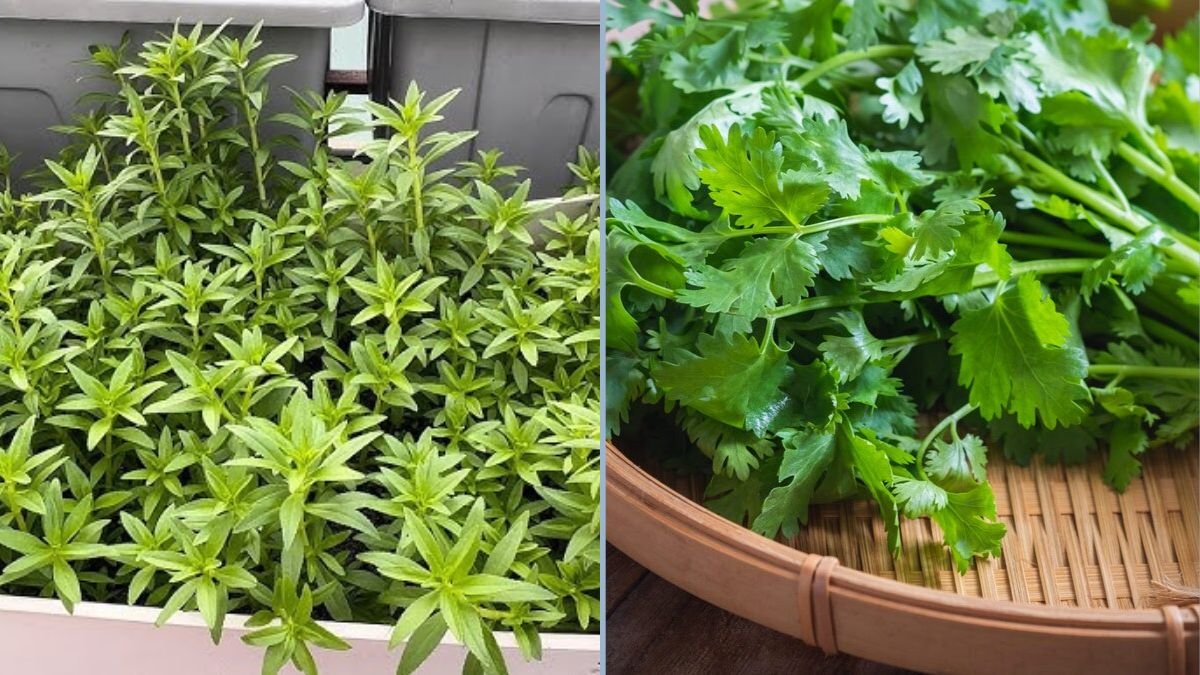Coriander, also known as cilantro, is a staple herb in kitchens worldwide. Its fresh, aromatic leaves add flavor and nutrition to a variety of dishes, from salads and soups to curries and sauces. Braised coriander with tops, a method that allows you to harvest tender stems and leaves continuously, is particularly popular among home gardeners seeking unbeatable results. Unlike regular coriander, which can bolt quickly or grow unevenly, this method ensures healthy, productive plants that provide fresh greens for weeks. In this guide, we’ll cover everything you need to know to grow braised coriander with tops successfully—from selecting seeds to harvesting and caring for your plants.
Why Grow Braised Coriander with Tops
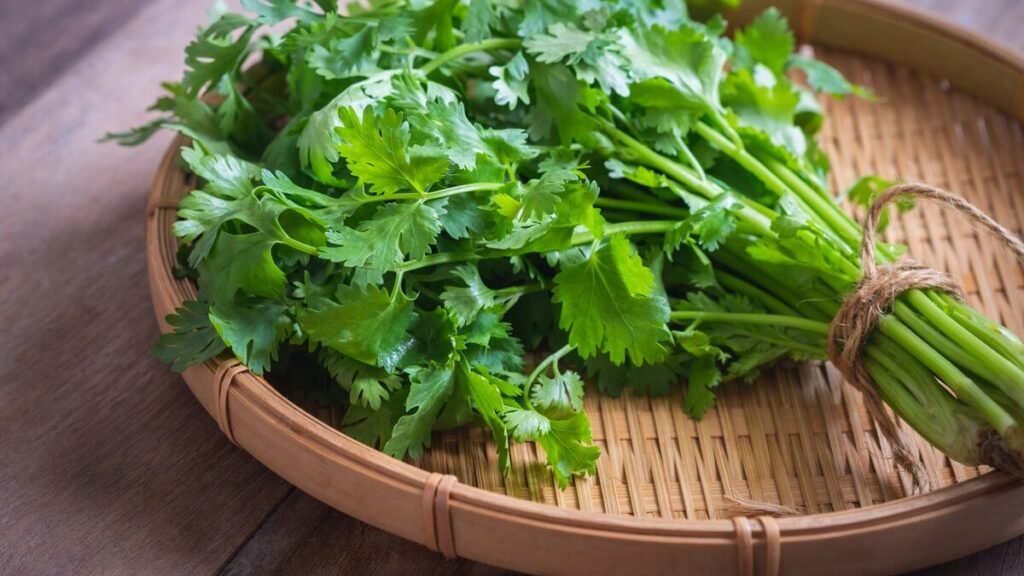
Growing braised coriander with tops at home comes with several benefits:
- Continuous harvest: Unlike traditional coriander, which can go to seed quickly, this method allows repeated harvesting of stems and leaves.
- Fresh flavor: Homegrown coriander retains its aroma and taste, enhancing your dishes.
- Nutrient-rich: Coriander is packed with vitamins A, C, K, and minerals like calcium, iron, and potassium.
- Cost-effective: Growing at home saves money compared to buying fresh coriander from the market regularly.
- Versatile: Both leaves and tender stems can be used in cooking, making the plant even more valuable.
By growing braised coriander with tops, you get maximum yield and flavor in a small space.
Choosing the Right Seeds
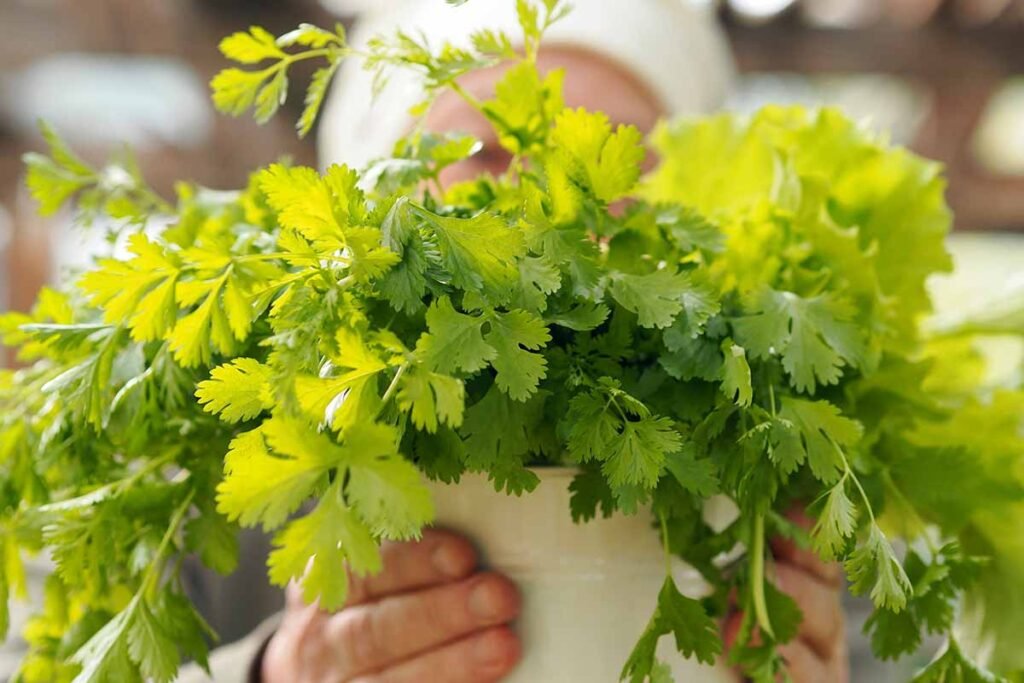
The foundation of successful coriander cultivation begins with choosing the right seeds:
- High-germination seeds: Select fresh seeds with high viability to ensure strong growth.
- Varieties suited for braising: Some coriander varieties are better for producing tender stems and tops. Look for varieties labeled “slow-bolting” or “cut-and-come-again.”
- Organic seeds: Organic seeds are free from chemical treatments that may affect germination or flavor.
Choosing the right seeds sets you up for a healthy, productive crop.
Preparing the Growing Medium
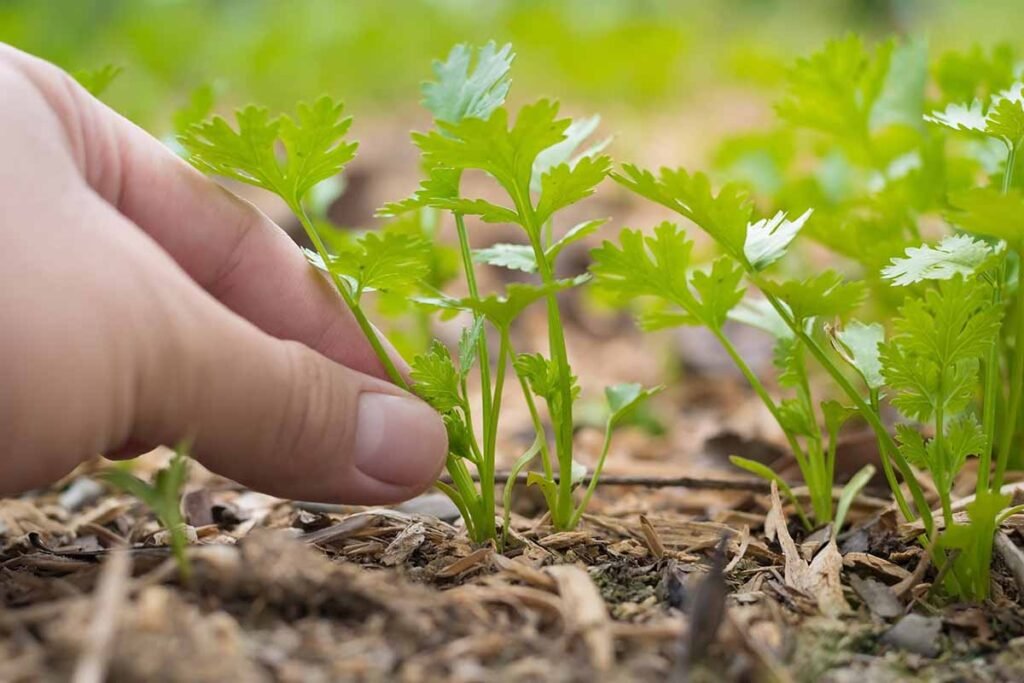
Coriander thrives in well-draining, nutrient-rich soil:
- Soil mix: Use a combination of garden soil, compost, and sand or perlite (ratio 2:1:1) for aeration and drainage.
- pH level: Coriander prefers slightly acidic to neutral soil (pH 6–7).
- Containers: You can grow coriander in pots, trays, or garden beds. For braised coriander with tops, choose deeper pots (20–25 cm) to allow roots to expand.
- Drainage: Ensure pots have drainage holes to prevent waterlogging and root rot.
A well-prepared medium is key to vigorous growth and abundant harvests.
Sowing Coriander Seeds
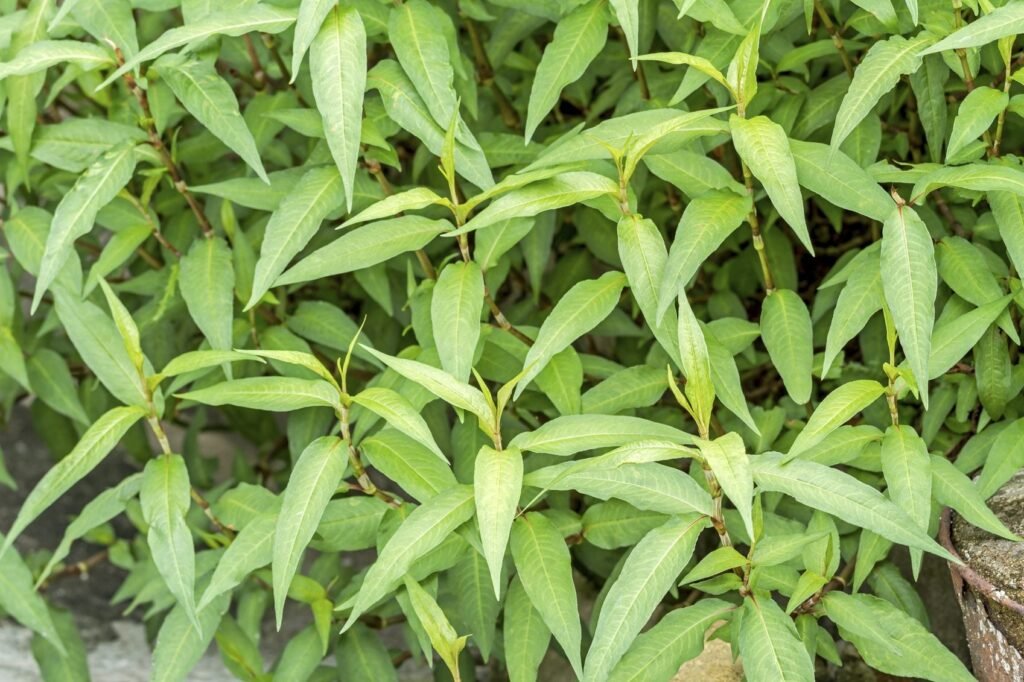
Planting coriander correctly is crucial for healthy, uniform growth:
- Soak seeds: Soak coriander seeds in water for 12–24 hours to speed up germination.
- Sow seeds: Plant seeds 1–2 cm deep in the prepared soil. Space seeds 5–7 cm apart for optimal growth.
- Watering: Keep soil consistently moist but not waterlogged. Overwatering can cause seeds to rot.
- Germination: Seeds typically germinate in 7–10 days under ideal conditions.
Proper sowing ensures strong, uniform seedlings ready for continuous harvesting.
Caring for Braised Coriander
Braised coriander requires regular care to produce tender leaves and stems consistently.
1. Watering
- Coriander prefers evenly moist soil, especially during the initial growth phase.
- Water early in the morning to avoid fungal growth and allow leaves to dry before evening.
- Avoid waterlogging, as coriander roots are sensitive and may rot if submerged in water.
2. Fertilization
- Use balanced organic fertilizers such as compost, vermicompost, or liquid seaweed every 2–3 weeks.
- For faster growth, a light nitrogen-rich fertilizer promotes leaf and stem development.
- Avoid excessive fertilization, which can lead to lush leaves but weak stems prone to bolting.
3. Sunlight
- Coriander grows best in full sun to partial shade, around 4–6 hours of sunlight per day.
- In hot climates, provide afternoon shade to prevent the plant from bolting prematurely.
4. Mulching
- Apply organic mulch, such as straw or dried leaves, to retain moisture and regulate soil temperature.
- Mulching also helps suppress weeds, reducing competition for nutrients.
Pruning and Harvesting for Continuous Growth
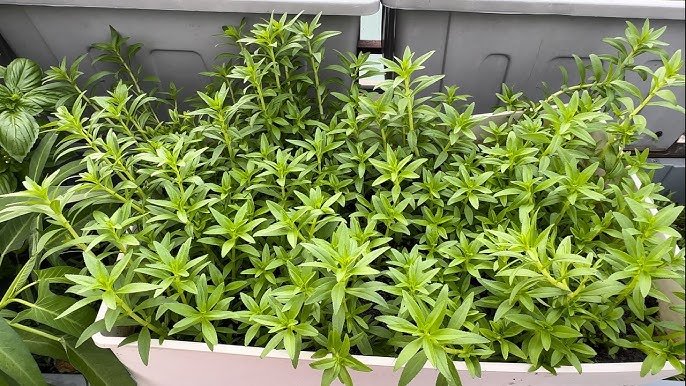
The key to “braised” coriander is regular pruning and harvesting:
- Cut-and-come-again method: Use scissors to trim leaves and stems about 2–3 cm above the soil level. This encourages the plant to produce new growth.
- Harvest frequency: Trim every 1–2 weeks, depending on growth rate. Avoid cutting more than one-third of the plant at a time.
- Encouraging bushiness: Regular pruning prevents the plant from becoming leggy and promotes fuller growth with more edible tops.
- Timing: Harvest leaves in the morning when their flavor is most intense.
This method ensures a continuous supply of fresh, tender coriander for weeks, if not months.
Controlling Pests and Diseases
Even in a home garden, coriander is susceptible to pests and diseases:
Common pests: Aphids, leaf miners, and spider mites.
- Control naturally by spraying neem oil or introducing beneficial insects like ladybugs.
Common diseases: Powdery mildew and damping-off in seedlings.
- Prevent with proper spacing for airflow, watering at the soil level, and avoiding overcrowding.
Regular inspection and prompt intervention help maintain healthy, productive plants.
Growing Braised Coriander in Small Spaces
One of the advantages of braised coriander is that it can be grown in limited spaces:
- Container gardening: Use deep pots or grow bags on balconies or patios.
- Indoor growing: Place containers near sunny windows or use grow lights for sufficient light.
- Vertical systems: Install small shelves to grow multiple containers in minimal space.
These methods make it easy to enjoy fresh coriander without a large garden.
Nutritional and Culinary Benefits
Braised coriander is not just convenient; it’s also incredibly nutritious:
- Vitamins: Rich in vitamin A, C, and K.
- Minerals: Contains calcium, iron, magnesium, and potassium.
- Antioxidants: Supports the immune system and helps reduce inflammation.
- Flavor enhancement: Adds fresh aroma and taste to salads, soups, curries, and sauces.
Using both the leaves and tender stems increases the versatility of this herb in cooking.
Tips for Unbeatable Braised Coriander
- Rotate crops: Stagger sowing every 2–3 weeks for a continuous supply.
- Avoid stress: Keep soil moist and provide enough light to prevent bolting.
- Companion planting: Plant coriander near tomatoes, carrots, or onions to improve growth and deter pests.
- Seed saving: Allow a few plants to flower and produce seeds for future planting.
- Harvesting tips: Always use sharp scissors to prevent damaging the plant and encourage regrowth.
Following these tips ensures maximum yield, flavor, and longevity of your coriander plants.
Conclusion
Growing braised coriander with tops is an unbeatable method for home gardeners who want a continuous supply of fresh, aromatic herbs. With the right seeds, soil preparation, watering, sunlight, pruning, and care, anyone can enjoy healthy, productive plants without the frustration of bolting or uneven growth.
Whether you have a spacious backyard, a balcony, or even an indoor setup, this method allows you to enjoy coriander at its peak of flavor and nutrition all year round. By following the standard steps outlined in this guide, you can achieve unbeatable results, harvest tender stems and leaves repeatedly, and enhance your culinary creations with the fresh taste of homegrown coriander.
Growing braised coriander is not just a gardening success; it’s a lifestyle improvement, providing fresh ingredients, saving money, and adding joy to your kitchen and dining table. Start today, and experience the unbeatable rewards of continuous, homegrown coriander.
